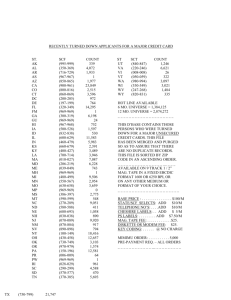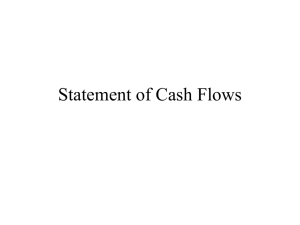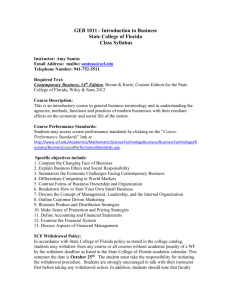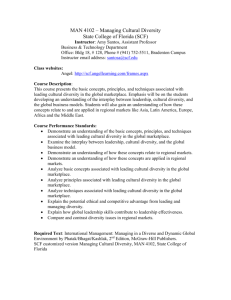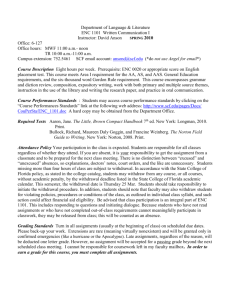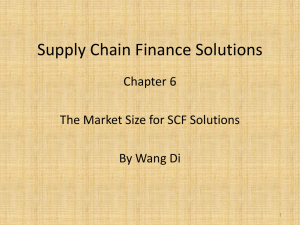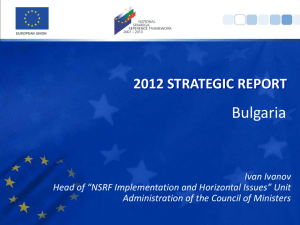Plan of Activities/Dissemination Strategies
advertisement
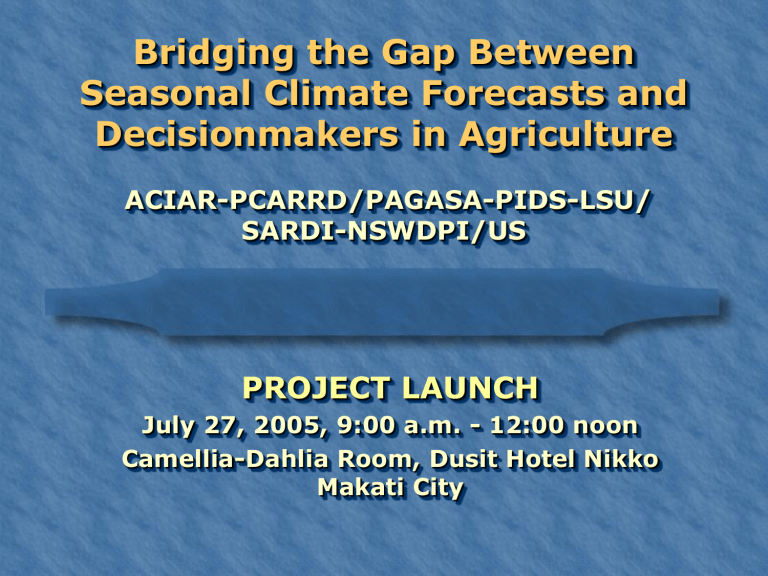
Bridging the Gap Between Seasonal Climate Forecasts and Decisionmakers in Agriculture ACIAR-PCARRD/PAGASA-PIDS-LSU/ SARDI-NSWDPI/US PROJECT LAUNCH July 27, 2005, 9:00 a.m. - 12:00 noon Camellia-Dahlia Room, Dusit Hotel Nikko Makati City Plan of Activities Seasonal Climate Forecasting Farm and Policy Level Case Studies Dissemination Plan of Activities Seasonal Climate Forecasting Improving the capacity of PAGASA to develop and deliver SCF Document status of climate data in the Philippines and update database in RAINMAN Prepare seasonal climate forecasts to be used in the farm level and policy level studies Produce information package re SCF Plan of Activities Valuing SCF Distilling key practical and methodological features of economic and psychological approaches to valuing SCF Compare the strengths and weaknesses of different approaches to valuing SCF Plan of Activities Case Studies 3. Estimating the potential economic value of SCF for farm level and policy level case studies a. Expected returns from decisions based on knowledge of average rainfall conditions will be compared with expected returns from decisions based on rainfall probabilities from SCF. b. Compare alternative methods in terms of ease of use, sensitivity to input assumptions and conclusions regarding potential value of SCF. Sites for the Farm Level Case Studies Site Impact of ENSO Rainfed corn in Isabela Province * Top cornproducing province Medium impact Rainfed corn in Leyte Province Rainfed corn in Bukidnon Province * Second top cornproducing province Availability of data Adequate rainfall data. Production data at provincial level. High impact Rainfall data is okay. Production data at provincial level. Secondary data on biophysical and socioeconomic characteristics for Matalom. Very high impact Rainfall data is okay. Production data at provincial level. Secondary data on biophysical and socioeconomic characteristics. Plan of Activities Farm Level Case Studies The studies will provide information about how farmers and other decision makers use SCF to make real decisions. They will also be used to estimate the value of SCF. Plan of Activities Policy Case Study The policy case study will show the potential economic value of SCF to policy level decisions in the Philippines Focuses on procurement and storage of rice NFA responsible for stabilization of grains supply and prices, both at the farmgate and consumer levels Plan of Activities Policy Case Study Philippines net importer of rice Grain storage and price decisions are based on expected total grain production, where total production is projected using statistical forecast based on expected harvested areas and potential yield per hectare. Volume of Rice Imports (in metric tons) Philippines, 1980 - 2005 Sources: Volume of Imports: NFA ENSO Years: Dr. Wilfredo David’s presentation on ENSO 3,500,000 3,250,000 3,000,000 2,750,000 2,500,000 2,250,000 2,000,000 1,750,000 1,500,000 1,250,000 1,000,000 750,000 500,000 250,000 0 1980 1982 1984 1986 1988 1990 ENSO Year 1992 1994 Rice 1996 1998 2000 2002 2004 Plan of Activities Policy Case Study This study will explore the links between SCF and grain storage policy and evaluate its impact in terms of efficient grain storage and pricing decisions at the national and local levels. This study will examine the impact of ENSO on the price and regional supply or rice purchased by the Philippines, given that ENSO has an impact across Asia. Plan of Activities Actual and Potential Uses of SCF 4. Identifying factors leading to a gap between actual and potential values of SCF a. Describe how SCF are currently being used in the case study areas b. Estimate the actual value of SCF to farm and policy level decisions in the Philippines c. Assess reasons for the divergence in actual and potential values Plan of Activities Dissemination 5. Developing and implementing strategies to better match forecasts with decisionmakers’ needs a. How to present SCF information to farmers b. How to educate decisionmakers in the use of SCF technologies Dissemination Strategies What are the information to be disseminated? Basic concepts about weather/climate various climate phenomena/events, risks involved, the science of seasonal climate forecasts, etc. Regular weather/climate outlook/forecasts Results of project’s various research/case studies/surveys Dissemination Strategies Who are our target beneficiaries/users? Basically, the ones making decisions in the and affecting the agriculture sector: Farmers - at the farm level Policymakers – both at the national/macro level and the local level Dissemination Strategies How do we reach them? IEC type of activities – seminars, fora, lectures, handouts/publications thru various conduits such as: LGUs NGOs Research centers/groups especially those working with farmers Media, especially local media (provincial radio-television stations, local newspapers and media groups), the PIA and DevComNet Dissemination Strategies How do we reach them? Dialogues with various groups (especially one case studies and surveys) Farmers groups Community leaders/associations Leagues of barangays, municipalities/cities and provinces Media Internet Dissemination Strategies What have we done so far? Pulong Saliksikan at PIDS on basic climate concepts and their implications (with government technical and policy level representatives) Seminar-workshop at Leyte State University (with provincial and municipal agriculturists, and members of academe in the region) Quarterly PAGASA Climate Outlook Fora of Dissemination Strategies What have we done so far? Handouts on basic concepts (for media, LGUs, NGOs) This project launch to introduce the project and to solicit your interest support and feedback Project website detailing the project description, objectives and progress of work URL is: http://dirp3.pids.gov.ph/ACIAR
